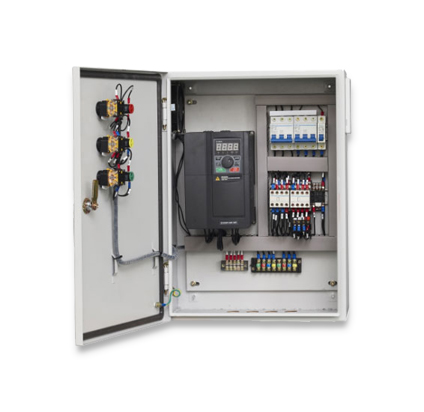Exploring the Role of Variable Frequency Drive Panels in Motor Control
Introduction
In the world of industrial automation, efficient motor control is essential for optimizing energy consumption and achieving precise speed and torque control. One technology that has revolutionized motor control systems is Variable Frequency Drive (VFD) panels. In this blog, we will delve into the role of VFD panels and how they enhance motor control capabilities, resulting in improved efficiency and performance.
Understanding Variable Frequency Drive Panels:
Electrical enclosures that contain variable frequency drives are known as variable frequency drive panels, commonly referred to as VFD panels or motor control centers. By adjusting the frequency and voltage that are provided to an electric motor, these drives are electrical devices that regulate the torque and speed of the motor. The purpose of VFD panels is to provide a centralized, well-organized solution for motor control, including a variety of capabilities and safety features.
Enhanced Motor Control
The primary role of VFD panels is to enable precise control of motor speed and torque. By adjusting the frequency and voltage supplied to the motor, VFD panels allow operators to achieve optimal performance according to specific requirements. Whether it’s a simple fan or a complex conveyor system, VFD panels provide the flexibility to vary motor speed, resulting in energy savings, reduced wear and tear, and improved process control.
Energy Efficiency and Cost Savings
VFD panels contribute significantly to energy efficiency by reducing the power consumption of motors. Traditional motor control methods, such as throttling valves or mechanical control devices, dissipate excess energy as heat, leading to wastage. VFD panels, on the other hand, optimize energy usage by controlling the motor speed to match the required load, thereby reducing energy consumption. This not only lowers operational costs but also contributes to a greener environment.
Soft Start and Stop
Another key advantage of VFD panels is their ability to provide soft start and stop functions. Traditional motor starters often lead to abrupt voltage and current changes during motor startup and shutdown, causing stress on the motor and connected machinery. VFD panels gradually ramp up the motor speed during startup and gently decelerate during shutdown, eliminating sudden jolts. This feature extends the lifespan of the motor, reduces maintenance needs, and enhances operational safety.
Harmonic Mitigation
Harmonics, which are unwanted electrical distortions in power systems, can negatively impact both motors and other sensitive equipment. VFD panels incorporate harmonic mitigation techniques to minimize the impact of harmonics, ensuring reliable and stable motor operation. By reducing harmonic distortion, VFD panels help prevent premature motor failures, voltage disruptions, and equipment malfunctions, resulting in improved overall system reliability.
Monitoring and Protection
VFD panels offer comprehensive monitoring and protection features to safeguard motors and connected equipment. These panels provide real-time data on motor performance, power consumption, and system diagnostics, allowing operators to detect issues promptly and optimize operations. In-built protection measures, such as overload protection, short-circuit protection, and overvoltage/under voltage protection, enhance motor safety and prevent costly damages.
Conclusion
Variable Frequency Drive Panels play a crucial role in modern motor control systems, offering enhanced control, energy efficiency, soft start/stop capabilities, harmonic mitigation, and comprehensive monitoring and protection. By incorporating Variable Frequency Drive Panels into motor control applications, industries can achieve significant cost savings, reduced downtime, improved productivity, and increased equipment lifespan. As technology continues to evolve, VFD panels will remain at the forefront of motor control advancements, enabling smarter and more efficient industrial processes.







